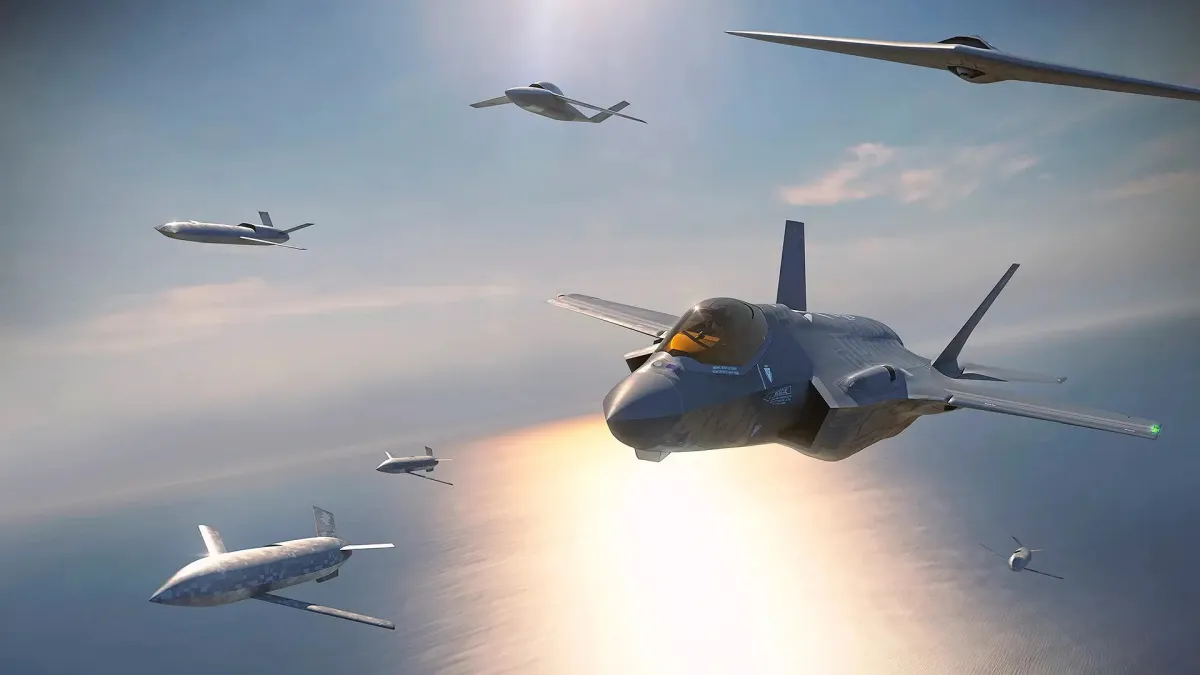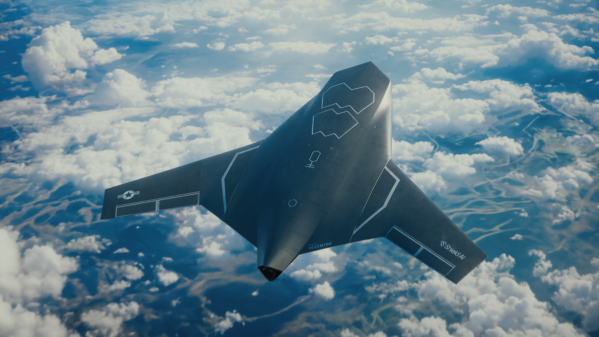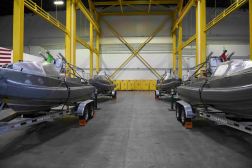Navy aiming for $15M price tag for CCA drones; avoid long-term sustainment costs

The Navy is hoping that it can buy “cooperative combat aircraft” for about $15 million per system and not pump money into long-term sustainment, according to the program executive officer for unmanned aviation and strike weapons.
The sea service is aiming to acquire AI-enabled drones that are “consumable,” Rear Adm. Stephen Tedford said Monday during a briefing at the Navy League’s Sea-Air-Space conference.
For major U.S. military weapon systems, sustainment can sometimes account for about 70% of the lifecycle cost. But for CCAs, the Navy doesn’t want to follow that model.
“We’re trying to get after CCAs in a revolutionary way, intentionally trying to avoid ACAT 1, 35-year lifecycle sustainment of a platform. I don’t need them that long. I need a platform that instead of buying 500, I’ll buy 60. Okay. And I can do them in a rolling wave so I can keep pace with the technology of the unmanned platforms, but also keep pace with the threat by upgrading sensors, platforms, systems, weapons, and I can do it at a recurring investment cost,” Tedford told DefenseScoop during the briefing.
“I’m also trying to do this so that my unit cost of the platform is as absolutely low as possible — trying to keep it at around the $15 million mark, okay, because I need it to be considered consumable. Okay. I want something that’s going to fly for a couple hundred hours, [and for] it’s last hour it’s either a target or a weapon. I’m either going to hit something with it or I’m going to train and shoot it down. But I’m not going to sustain it for 30 years. So if you’re any cost estimators out there, those are zeros in sustainment,” he added.
The systems could also be designed with the assumption that they won’t have to conduct nearly as many catapult launches or landings — also known as cats and traps — on an aircraft carrier as today’s manned fighter jets, he suggested.
“It’s not a different way of launch and recovery, it’s a different way of looking at risk. So, I’m not trying to design a platform that’s going to do cyclic operations on an aircraft carrier the way we know it today where you’re launching and recovering every 45 minutes to an hour and a half. [That’s] not what we’re trying to design. That 200 hours [of total lifecycle flight time] may only have 10 cats and traps. Okay. We’re trying to limit that scope because if I do try to design something that has 6,000 hours of life and can do cats and traps all day, I just designed an F-18. [That’s] not what I’m trying to get after, right?” he said.
“So, I’m trying to limit that engineering space … and if I can keep the price point low enough and keep people in a consumable mindset, then I can also keep them in an engineering mindset that is equivalent,” Tedford added. “If I only need to launch it and recover it a handful of times, instead of throughout its lifecycle, I can completely change the engineering calculus involved.”
The Navy is hoping to field its first iteration of CCAs before 2030, he told DefenseScoop.
The service has been working with Australia on manned-unmanned teaming technologies. They plan to conduct an exercise next summer where a “section or division” of drones will be controlled or directed by a manned airborne asset.
In fiscal 2025, the Navy will also be kicking off additional analysis and study for CCA-related technologies.
“We’re going to be starting primarily on payloads and systems and sensors, not the platform. Okay. Every time we talk about CCAs, because the last letter is an ‘A’ and everybody says aircraft, they stop thinking about it as a weapon. I need to think about it as a weapon. So we’re going to focus on what do I need it to do? What sensors and gaps do we need to cover in combat? And then try to find the platform that keeps me at the low cost projected,” he explained.
There are a number of key enabling technologies that the Navy is focusing on advancing as it pursues next-generation unmanned platforms. Those include propulsion and power; networks and resilient command and control; payloads and sensor perception; launch and recovery; resilient positioning, navigation and timing; and AI and autonomy.
The U.S. Air Force is also pursuing CCAs, which it refers to as “collaborative combat aircraft.” It’s aiming to field the first iteration by the end of fiscal 2028. Navy officials have previously suggested that in the future the two services could potentially control each other’s drones.
Tedford said the Air Force is taking the lead in some areas, with the Navy in a follower role.
“The Air Force has the lead on developing the government reference architecture standards for how we’re going to be getting after AI and autonomy. This is the interfaces, this is the language, this is the definitions” of autonomy, Tedford said.
The effort comes as the Pentagon is pursuing a warfighting concept known as Joint All-Domain Command and Control (JADC2), with the aim of better connecting sensors, shooters and data across the services and key international partners.
“The government reference architecture is how we are going to be playing in this space, so that all of our systems, control systems, platforms are interoperable. Where we’re specifically going, whether it’s with a cooperative combat aircraft or existing unmanned platforms, is that we need to be able to get all of the information that those platforms ingest and transmit and get it to any and all platforms. Okay. I am not interested in pursuing a proprietary solution that will only talk to one specific proprietary platform. It has to be universal, it has to be interdependent, and it has to be interchangeable. That includes the sensors, that includes the [common operating picture], that includes the message traffic, and it includes the intel. Okay. We’re going to be taking these platforms and putting them out into combat operations, and everybody needs to be pulling from the same information-trusted source and not questioning where it’s coming from,” Tedford said.






